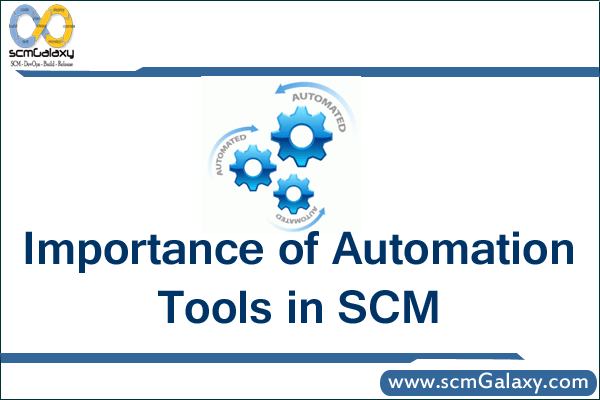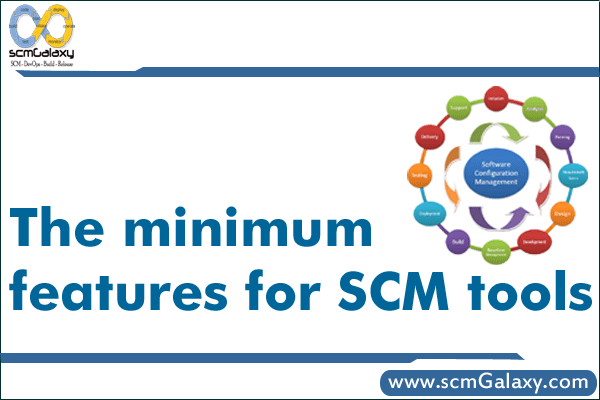SCM Tools
The minimum features for SCM tools are closely related to the task of handling the different product deliverables produced within the project software engineering process. Tool requirements and selection criteria are based on a series of features that provide a consistent look and feel with state-of-the-art software development environments. An SCM tool must have multiuser support, an intuitive graphical user interface, conformity to the organization’s development environment, scalability, flexibility in integrating other software development tools, ease of setup, modifiable models, process management, extensive support for the development phase, and management of nondevelopment objects.
Basic selection criteria includes the following:
- Multiuser support—Tools are to be used concurrently by several users. They have to store all acquired information in a central, shared repository, and the SCM tool has to allow controlled parallel work on the different project documents.
- Intuitive GUI—Because the tools will be used throughout the project and not only by developers, an intuitive, easy-to-use graphical user interface is considered very important.
- Conformity to the organization’s development environment—The organization must define up front the hardware and software development platforms used. For example, the project may work on a heterogeneous network of Unix-based workstations (mainly Sun Sparc stations) and PCs. The workstations may be used for some part of the development and as a file server and communication server. The PCs may be using MS Windows 2000 NT. PCs and workstations may be interconnected using the NFS protocol (especially Sun PC-NFSpro on the PCs). The tool has to be able to store its shared repositories on a workstation and has to allow PC clients as well as workstation clients supporting the operating systems and protocols.
- Scalability—The tool should work equally well for smaller projects as for larger ones.
- Flexibility in integrating other software development tools—The tool must allow the integration of all the other development tools to provide a highly homogeneous environment. Especially the tools for design, implementation, and testing will have to co-operate on the common SCM repository.
- Ease of setup—The SCM tool should allow an easy installation and setup, and should be able to run nearly “out of the box.” It should contain predefined, immediately usable models describing the types of items, the life cycle, and the roles of the different users. The importance of existing projects and their directory structures should be made as easy as possible.
- Modifiable models—Though a working set of models should be predefined, each of these should be modifiable and extensible. This is especially important because project managers and developers want to adapt these models to the software development process as defined for the company. Role models must be adapted to the roles assigned to the different employees on the project. Object-type models must be extensible to reflect different types of objects used in the environment and especially with respect to nondevelopment objects.
- Process management—Process management comprises efficient support of object life cycles and object promotion, together with a flexible and extensible approach to life cycle models. Based on a concept of object types, it should be possible to attach different life cycles to different types of objects.
- Extensive support for the development phase—During development when checkout and update of objects is frequent, the tool should aid a developer in determining the set of objects that need an update or renewed check-in. Although this requirement seems to be trivial at first, the latest version of the tool you plan to use must be evaluated with emphasis on the environment prior to the first build. These do a good job in change management once the first release has been produced.
- Management of nondevelopment objects—SCM tools must manage all artifacts of the project, not just code. These will mainly be documents and their versions and releases. The tool must be able to support that.
- Permission management—Everyone should not have access to make changes to different pieces of the software. In many situations, check-in and checkout only will not prevent integration from being broken by multiple people modifying code for their own designs and interfaces.
Many configuration management tools in the market promise to fulfill more or less all of the requirements. Chapter 24, “Use of Tools,” presented a general model for the selection of tools to support software development and project management. The keys to any tool selection are to know your project’s tool requirements, to understand how tools relate to the project’s success factors, and to do a current market search for tools. The following is an example of using that tool selection method for an SCM tool. This is simply an example, and it must be updated with individual key project success factors, tool requirements, and the tools available in the market based on the project’s schedule requirements.

